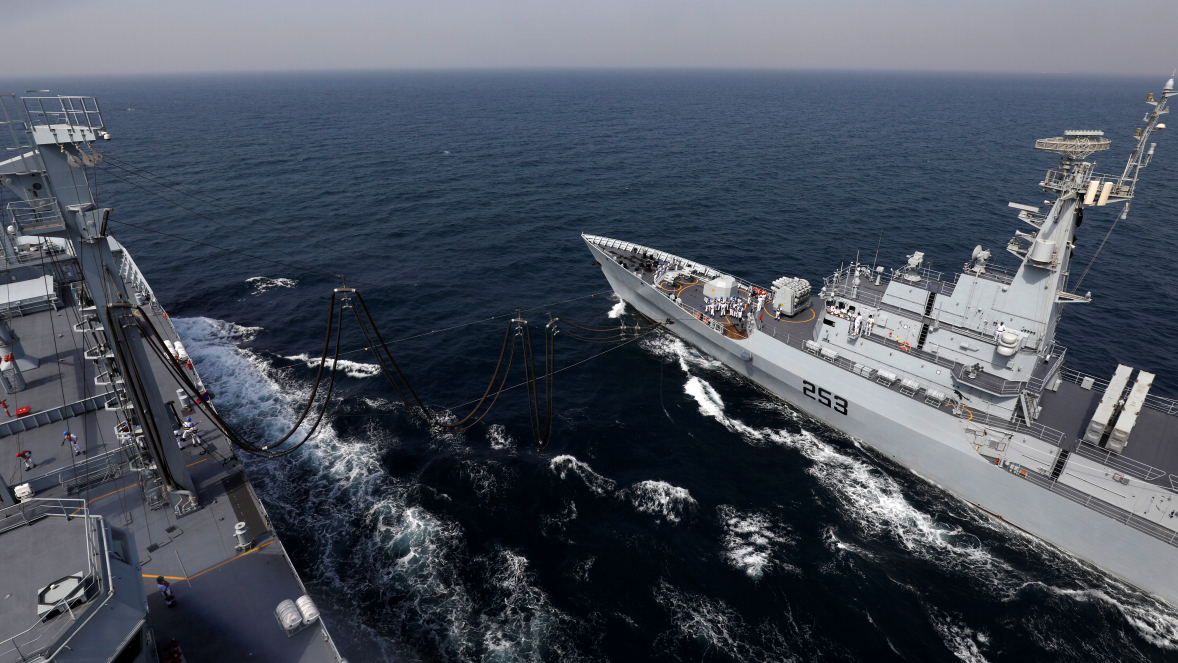Casualties rise as Thailand–Cambodia clashes escalate
The latest round of clashes between Thailand and Cambodia has left 15 Thai soldiers dead and 270 others injured, Thailand’s Ministry of Defence spok...

Pakistan expects to bring its first Chinese-designed Hangor-class submarine into active service next year, a move seen as deepening its defence partnership with Beijing and strengthening its posture in the North Arabian Sea.
Pakistan’s naval chief, Admiral Naveed Ashraf, said the eight-vessel submarine programme with China is progressing on schedule and will be completed by 2028, with the initial boats to be delivered from Chinese shipyards and the later ones built in Pakistan to raise local shipbuilding capacity. He told China’s Global Times that the new platforms will allow the Pakistan navy to operate more confidently across the North Arabian Sea and wider Indian Ocean, where Islamabad seeks to maintain regional balance as India expands its maritime presence.
The Hangor-class deal, reported to be worth up to $5 billion, provides for four diesel-electric attack submarines to be constructed in China and four to be assembled in Pakistan. Islamabad has already launched three boats into the Yangtze River from a shipyard in Hubei province as part of trials, signalling that the industrial side of the programme is underway.
Admiral Ashraf described Chinese equipment as reliable, technologically advanced, and suited to Pakistan’s operational requirements, adding that the navy is now looking at unmanned systems, artificial intelligence, and advanced electronic warfare solutions in cooperation with China to keep pace with the changing nature of modern naval confrontations. He said the partnership is not limited to the sale of hardware but reflects shared strategic thinking, long-term trust and an ambition to expand into training, interoperability, research and defence industrial collaboration.
The update comes months after Pakistan’s air force used Chinese-made J-10 fighter jets to shoot down an Indian Air Force Rafale in May, an incident that surprised many defence analysts and prompted renewed debate over how Chinese platforms stack up against Western systems in South Asia. For Islamabad, the submarine programme is part of a broader effort to maintain deterrence at sea as India fields its own mix of nuclear-powered and diesel-electric submarines acquired or developed with France, Germany and Russia over several decades.
China, meanwhile, has linked the undersea deal to a broader framework of regional cooperation through the 3,000 km China-Pakistan Economic Corridor connecting Xinjiang to the deep-water port of Gwadar. The corridor, a key component of President Xi Jinping’s Belt and Road Initiative, aims to create a secure trade route for Middle Eastern energy supplies while enhancing connectivity across South and Central Asia. The project also underscores Beijing’s growing role in supporting regional development and maritime stability.
"In the coming decade, we expect this relationship to grow, encompassing not only shipbuilding and training, but also enhanced interoperability, research, technology sharing and industrial collaboration," Admiral Ashraf said, framing the submarine project as the start of a longer-term naval partnership rather than a single procurement.
The Oligarch’s Design is an investigative documentary exploring how financial power, political influence and carefully constructed narratives can shape conflict and public perception.
Japan has lifted a tsunami advisory issued after an earthquake with a magnitude of 6.9 hit the country's northeastern region on Friday (12 December), the Japan Meteorological Agency (JMA) said. The JMA had earlier put the earthquake's preliminary magnitude at 6.7.
Turkish President Recep Tayyip Erdoğan reiterated his offer to host Ukraine-Russia peace talks in Ankara, at his meeting with Russian President Vladimir Putin. The talks took place on the sidelines of the international Forum for Peace and Trust in Ashgabat, Turkmenistan, on Friday (12 December).
The United States issued new sanctions targeting Venezuela on Thursday, imposing curbs on three nephews of President Nicolas Maduro's wife, as well as six crude oil tankers and shipping companies linked to them, as Washington ramps up pressure on Caracas.
The resignation of Bulgaria's government on Thursday (11 December) puts an end to an increasingly unpopular coalition but is likely to usher in a period of prolonged political instability on the eve of the Black Sea nation's entry into the euro zone.
U.S. stock markets closed lower at the end of the week, as investors continued to rotate out of technology shares, putting pressure on major indices.
EU foreign policy chief Kaja Kallas has warned that without concrete concessions from Russia, such as limiting its military forces or curbing its defence budget, new conflicts could erupt elsewhere, even if Ukraine receives security guarantees.
The latest round of clashes between Thailand and Cambodia has left 15 Thai soldiers dead and 270 others injured, Thailand’s Ministry of Defence spokesman Surasant Kongsiri said at a press conference on Saturday.
Iranian authorities have seized a foreign tanker carrying more than 6 million litres of smuggled fuel in the Sea of Oman.
A United Airlines flight heading to Tokyo was forced to return to Washington Dulles International Airport shortly after takeoff on Saturday after an engine failure, prompting an investigation by U.S. aviation authorities.
You can download the AnewZ application from Play Store and the App Store.

What is your opinion on this topic?
Leave the first comment